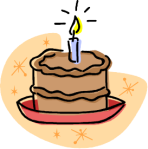 I’m a great advocate of the right to breastfeed in public places and get extremely annoyed with people who express their ‘distaste’ at the idea. How ludicrous to deny babies the right to eat outside the house, when it’s fine for everyone else? Nevertheless, with my first daughter it was something I found difficult, so I tended to avoid it if I could.
I’m a great advocate of the right to breastfeed in public places and get extremely annoyed with people who express their ‘distaste’ at the idea. How ludicrous to deny babies the right to eat outside the house, when it’s fine for everyone else? Nevertheless, with my first daughter it was something I found difficult, so I tended to avoid it if I could.
After my second daughter, A, was born, the issue of breastfeeding away from home didn’t arise for some time. Most of our trips were short, and when they did extend beyond a couple of hours, they were usually to the homes of friends or family where I was perfectly comfortable feeding. On a trip to John Lewis, however, where I ended up sitting in the foul-smelling ‘breastfeeding area’ (right next to the ‘changing area’), rather than the cafe — where I had previously got so stressed my let-down reflex refused to kick in — I decided I really had to sort this issue out.
Although I had taken the first step of realising I had a problem, I made no real effort to confront my fears, and continued to avoid breastfeeding away from home as much as I feasibly could. It’s impossible to predict the appetite of a small baby all the time, however, and when I was walking through a wet field several miles from home, the inevitable happened.
The day had started with pretty miserable weather, but by lunchtime the clouds had cleared and we set out on a 2 hour walk through the countryside confident that we wouldn’t get rained on. I had put A in a Baby Bjorn carrier, and as usual, she went to sleep the minute she was ouside. Just as we had reached the point where we were as far away from the house as we could possibly get, A woke up and started to grizzle. This was something that happened from time to time when we were out, and I carried on walking, thinking that she would just go back to sleep as she normally did.
Unfortunately, she didn’t nod off again. Instead she started to howl furiously, in the way she might if she was hungry. Despite the fact that she had been fed just before we left the house, the intervening hour had been enough to work up a hearty appetite again, and it was pretty clear that I was going to have to find a way of getting some milk down her.
This was easier said than done. I looked around for somewhere to perch, and could see nothing but mud and wet grass. How on earth was I going to get A out of the carrier and successfully latched on whilst standing up, and what was I going to do with the carrier? Then I looked down and noticed that A’s mouth was at roughly the same level as my nipple. I had previously complained about the lack of a vomit/drool barrier between A’s mouth and my chest when using this carrier (as opposed to my previous Chicco one), but now I realised this could be an advantage. After a bit of grappling with the numerous layers I was wearing, I managed to expose enough nipple for A to take into her mouth (which she did, quickly). The whole manouveure was significantly more discreet than it sounds, as most of it was shielded from view by the carrier’s head rest.
I didn’t fancy spending the next twenty minutes standing in the middle of a field (other walkers had nodded politely as they passed, but probably wondered what on earth I was doing), so I took a few tentative steps whilst trying to keep A attached. Providing I did it slowly, walking didn’t seem to disrupt her, and I managed to reach a more plausible resting spot.
I’m now quite happy to take A out in the carrier, knowing I can feed her pretty easily if I need to. Interestingly, the confidence I’ve developed through doing this has automatically extended to other situations, and I recently managed to nurse A through an entire wedding breakfast. Psychologically this was quite an achievement for me, as I knew some of the guests weren’t keen on breastfeeding (‘I was bottle fed and it didn’t do me any harm’ etc.), and I had been dreading the prospect of constantly heading to the loo with a hungry baby. In the end, I just stayed at the table and got on with it. I can’t say the experience was wonderful, but that was mainly because I was sitting on a less than comfortable chair and had to negotiate the meal one-handed. Perhaps not surprisingly, breastfeeding in the John Lewis cafe holds no fear for me now.




